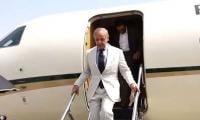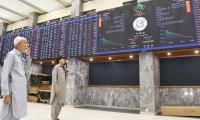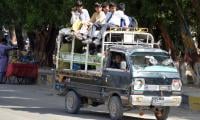LAHORE: The exuberance of the economic managers about Pakistan’s economy belies the ground reality, and unless they have something up their sleeves, the near future looks bleak both for businesses and public as all macroeconomic indicators are going down.
Indicators such as stability of local currency, central bank’s interest rates, inflation, foreign exchange reserves, capital market movements, and exports and imports depict the direction of an economy. For Pakistan, most of these indicators have gone down, putting a question mark on the health and future of the economy.
Pakistan Tehreek-e-Insaf (PTI) assumed power on August 18, 2018 when the policy rates of central bank were 7.5 percent. Today, the SBP policy rates are 10 percent.
On August 18, 2018 the dollar was equivalent to Rs123.80 and currently it is trading at Rs138.70. Foreign exchange reserves owned by SBP were at at $10.226 billion back then, now they have gone down to $7.502 billion.
The capital market too is operating at several thousand points less than on August 18, 2018. The pace of export growth has not picked up, though imports have gone down in November.
This is not a rosy picture. Revenue collection for the first quarter is Rs102 billion below the target. Expenses are increasing.
Foreign debt is rising in terms of rupee, after massive devaluation that has increased the debt servicing cost. There is pressure on prices of petroleum products.
Despite the fact that the crude oil prices have appreciably gone down in the global market, devaluation has nullified this advantage for the Pakistani consumers.
Investors prefer economies where interest rates are low and currency is stable.
This is not so in Pakistan, which is the reason for low investment in the country.
The only thing to celebrate is that Pakistan has up till now avoided default on its foreign loans. We have in fact been avoiding this default for years by borrowing more to return back the previous loans.
This government is also doing the same. No political party can implement its economic agenda if it has to consume most of its energies on fire fighting.
The problem will continue to bother the present government throughout its tenure unless exports match imports.
The Federal Board of Revenue too needs to increase the tax base. The idea of some new and some older faces to revamp FBR will not work. The FBR needs a culture change, and if older faces are not removed it will be difficult to revamp it.
Pakistan badly needs to accelerate exports.
Unfortunately, we do not produce exportable products. Our
product range in textiles is extremely limited.
We compete in these products with numerous efficient producers. Under these circumstances, it would not be possible to increase exports to the desired level through textiles.
However, this government is still facilitating textiles and four other exporting sectors through subsidised gas and electricity.
The exports of these five sectors had been going down constantly; at best the export package will stop the decline in exports.
This will not resolve our foreign exchange issue that requires doubling of exports in three years. To improve exports, these five exporting sectors need technology upgrade to challenge their foreign competitors.
The government needs to tame inflation as well.
The federal government should take provinces into confidence to control the prices.
The provinces are better placed to control the prices of commodities.
If inflation is controlled, policy rates will too improve.
A representational image showing an oil refinery. — AFP/FileKARACHI: Pakistan Petroleum Limited has announced a...
P@SHA Chairman Zohaib Khan was the esteemed Chief Guest at Aptech 2023. — X/PASHAORG/FileKARACHI: Muhammad Zohaib...
PSX marked the listing of the Mahaana Islamic Index Exchange Traded Fund with a gong ceremony on April 23, 2024. —...
FPCCI Regional Chairman and VP Zaki Aijaz while speaking during a round table discussion on the challenges and...
This representational image shows Gold bars. — AFP/FileKARACHI: Gold prices in the local market fell by Rs7,800 per...
Security personnel walk past the US Federal Reserve building in Washington, DC on Oct 22, 2021. — AFPNew York:...







